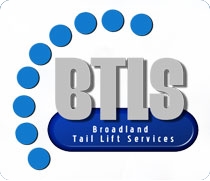LOLER and STE examinations.
What is a LOLER thorough examination?
This is a detailed examination of the tail lift components to ensure the tail lift is safe for continued use.
Who enforces LOLER?
Health and Safety Inspectors from the Health & Safety Executive (HSE) and Local Authorities enforce these Regulations.
What is the difference between a LOLER examination and a Statutory Thorough Examination?
There is none, just a use of different terminology, LOLER is the actual legislation, and a Statutory Thorough Examination (STE) is an examination referred to within LOLER.
What happens if I don’t carry out LOLER examinations?
You could be subject to enforcement action including being fined in a court of law. It is a legal requirement that you have a current report of thorough examination (STE) for the tail lift as fitted to the vehicle.
How often does my tail lift need an STE?
It is a requirement of legislation that tail lifts are regularly examined at a frequency of no more than six months apart. Some exceptions apply, but these are extremely rare.
Who can carry out a thorough examination?
The thorough examination should be carried out by a person who is competent and impartial i.e. someone who has appropriate practical and theoretical knowledge as well as experience of lifting equipment and can recognise potential defects that might be a safety risk to people if the tail lift continues to be used.
Who decides if a person is competent?
It is your responsibility to ensure that the person carrying out the STE is competent.
As the operator with no technical knowledge how am I supposed to make that decision?
Regardless of your knowledge, it is your legal responsibility to ensure that the competent person has the appropriate practical and theoretical knowledge. Assistance in finding a suitable competent person can be sought via your manufacturer, a trade association or UKAS (United Kingdom Accreditation Service).
Does that mean I do not need to get my tail lift serviced?
No, you still need to have your tail lift maintained. Tail Lift maintenance and LOLER thorough examinations are not the same. The easiest way to understand the difference between the two is to compare the LOLER thorough examination to the vehicle MOT inspection.
STE
How does an STE differ from a service? The competent person assesses the rate of deterioration of the equipment, identifies any defects and certifies that the equipment is safe for continued use for the next six months. No maintenance or repair work is done during an STE.
Can I carry out a service at the same time as a STE?
The STE must be independent of the service.
Who can maintain and repair my tail lift?
Repairs should only be undertaken by suitably qualified persons using appropriate repair techniques and procedures. One way of doing this is to use a repairer approved by the manufacturer to ensure the tail lift is maintained to a reliable standard, i.e. is in a sound mechanical and electrical state, safe to use and has all the safety features required to ensure that accident risk is minimised.
How often does my tail lift need servicing?
Generally at least every six months, although this timescale may need to be reduced if the tail lift is heavily used or damaged. Your tail lift manufacturer should be able to advise.
Does my tail lift need weight testing?
The competent person should decide whether a weight test is required as part of the thorough examination. Tail lift manufacturers recommend that an annual weight test is carried out as part of their maintenance requirements.
Do I need to carry out Risk Assessments?
Yes – the law requires operators to carry out risk assessments on the use of their tail lifts. This should be documented and cover all aspects of the use of the tail lift fitted to the vehicle (see useful reading section).
What if I do not service and maintain my tail lift?
It is your legal duty to maintain the tail lift in a good, safe and workable condition. You should be able to demonstrate this to the enforcement authorities if required. If you do not then you could be subject to enforcement action, including being prosecuted even if you have not had an accident.
BEST PRACTICE SUMMARY
1) Assess how you will use the tail lift safely.
2) Train those who are using the tail lift to do so safely.
3) Service your tail lift to keep it safe and reliable.
4) Examine, get a thorough examination report, every six months.
5) Record all of the above keeping those records
| 














